The bavarian way of life
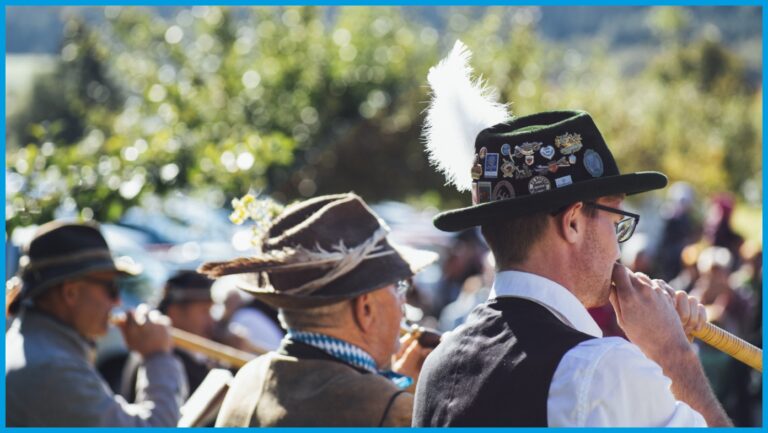
The Bavarian way of life is what is often thought to be entirely German, whereas typical elements such as the traditional Lederhosen and Dirndl attire, idyllic mountain scenery with alpenhorn blowers and beer in one litre mugs is originally mostly Bavarian.
Bavaria’s inhabitants are said to be charming, proud, self-confident, and usually sociable but sometimes stubborn. Grumbling is just part and parcel of everyday life. However, though maybe complaining about one’s own problems in life, Bavarians adopt a liberal motto of “to live and let live” (“leben und leben lassen”).
The state’s beautiful and often romantic scenery with its lakes, mountains, and castles, as well as the region’s history make Bavarians typically quite patriotic. Being proud of their origins, traditions are highly valued, celebrated and often form the centrepiece of the social life of the community.
At the same time, Bavaria is also an increasingly cosmopolitan place with 12% of its citizens already being expatriates and Munich featuring one of the biggest community of foreigners in Germany (at 28,5% of the population).
Bavaria’s versatility is reflected by its seven administrative districts, each of which has its own competencies when it comes to business, science, networks, and education. The variation in cultures and dialects (more than 60 dialects are spoken in Bavaria!) gives each region a personal charm entirely of its own.
tradition meets high-tech
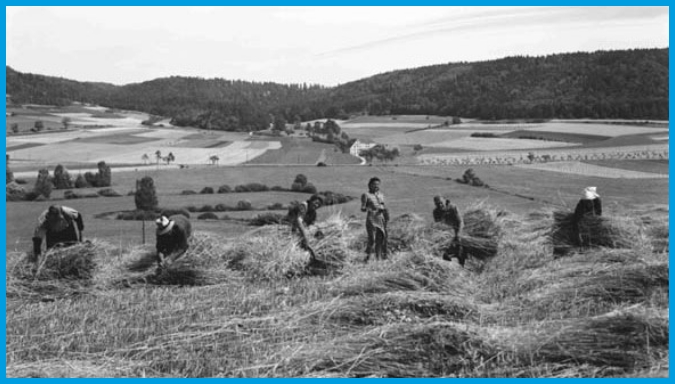

What makes Bavaria stand out is its unique blend of the old and the new, of tradition and vision, its agrarian roots and its high-tech outlook. Germany’s former head of state, Roman Herzog, once famously called Bavaria the land of “laptops and lederhosen” and while laptops might not symbolize the top-notch technological achievements of our days anymore, the underlying logic stills holds true: Bavaria is a region that values where it comes from but openly embraces the future at the same time.
Since the end of World War II, Bavaria has undergone an impressive transformative development from a poor agrarian state to one of Europe’s most prosperous and competitive regions today, an evolution that has attracted much interest near and far. Despite the significant change in its economic landscape within a short amount of time, Bavaria remains the most agricultural state in Germany and rural life continues to contribute significantly to its identity and social fabric. Simultaneously, the Free State increasingly strengthens its position as one of the leading international regions for high technology fields and only recently launched an ambitious investment plan, the so called High-Tech Agenda, that will see the mobilisation of up to €3.5 billion over the next few years to drive cutting-edge developments in key high tech industries including aerospace, IT, artificial intelligence, CleanTech, hydrogen, quantum technology, and life sciences.
So while in their hearts, Bavarians might always feel close to the idyllic, agricultural countryside that the Free State is famous for, they move with the times and embrace the challenges of a digital future.
Attire, customs, and festivities
Lived traditions are an integral part of the Bavarian way of life. Be it spring, summer, autumn, or winter, there are countless customs and festivities such as Maypole Day or the St. Leonhard horse-back procession as well as the world-famous Oktoberfest and the glittering Christmas markets that are loved by locals and tourists alike. The celebrations are often connected to traditional farming culture or Christian holidays and represent real highlights in the Bavarian calendar year. They are an important part of Bavarian social fabric and help to form the unique attitude to life that reigns in the Free State.
For many customs and festivities, people in Bavaria wear traditional costumes that once served as work clothes but now shape the Bavarian sense of identity. Bavarians of all ages still use traditional items of clothing such as the Dirndl or Lederhosen to demonstrate their regional identity today and thus also contribute to the myth and unique external representation of Bavaria beyond its borders.
Oktoberfest
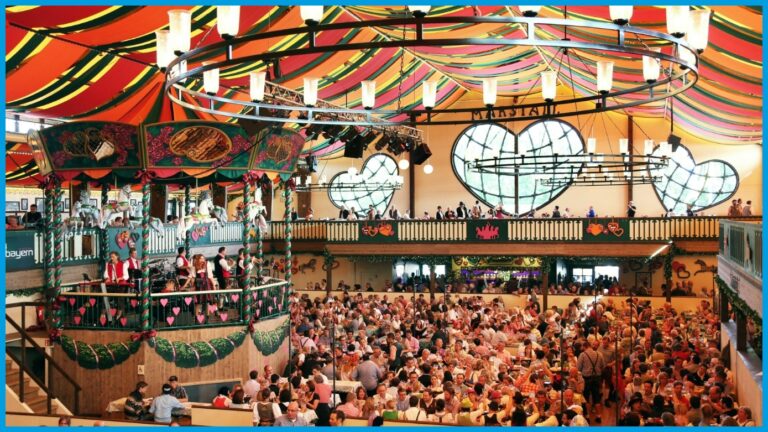
The Oktoberfest (or “Wies’n”, as Bavarians call it) is not only the most popular festival in Bavaria but also the largest fair in the world. It takes place annually in Munich for a period of just over two weeks – ironically starting in September, despite its name – and attracts over six million visitors who flock to rendezvous over beer, roast chicken, and pretzels. The festival has its origins in the wedding celebrations of King Ludwig I. and his wife Princess Therese in 1810 and – apart from very few exceptions – has taken place every year since then, making it a fundamental element of Bavarian history and culture. Nowadays, it is also a huge touristic highlight and many smaller versions of the Oktoberfest take place across numerous Bavarian cities and indeed around the world.
Almabtrieb and Viehscheid (cattle drive)
The Almabtrieb or Viehscheid is a major attraction in the Bavarian calendar of customs. In the alpine regions of Upper Bavaria and the Allgäu, many cows and bulls spend the summer seasons grazing in the lush mountain pastures. Each year as the summer draws to a close, the well-fed cattle with their festive decorations come down from the mountain pastures and back into the valley to join their stables for winter. The Kranzrind (crown cow) has a very special role to play in the event. The chosen animal leads the herd and wears a particularly elaborate headdress. The whole village and many tourists from near and far join in to celebrate the safe return of the cows to their farms.
Bavarian Traditional Clothing (Tracht)

The culture of traditional clothing – “Tracht” in German – has played a major role in rural Bavaria for more than 200 years. “Tracht” derives from the word “tragen” (to wear) and originally denoted the costume of a certain class in a certain region at the then current time. Nowadays these traditional clothes are being (re-)interpreted in many different styles and vary according to the occasion, age of the wearer and social class but all keep Bavarians connected in their very own way.
The best-known Bavarian attire is the Lederhosen – pants made of leather with traditional embroidery for men, – and the Dirndl – dresses with an apron and a blouse underneath for women. They are worn especially on traditional festivities or other festive occasions like marriages. And while at first glance one could think this is being considered very old-fashioned, Bavaria’s younger generations have upheld this tradition and ensured that original Bavarian attire never goes out of fashion.
Culinary Highlights of Bavaria
What would Bavaria be without its great foods and culinary highlights featuring a wide array of regional specialities? Bavarian food is usually hearty and delicious, with many excellent meat and potato-based dishes – but it also has some great vegetarian or sweet options to offer.

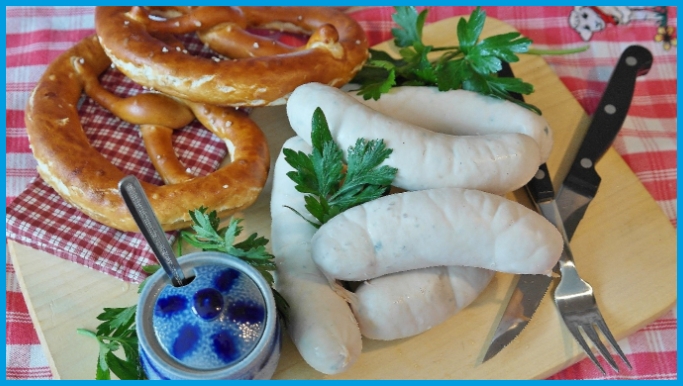

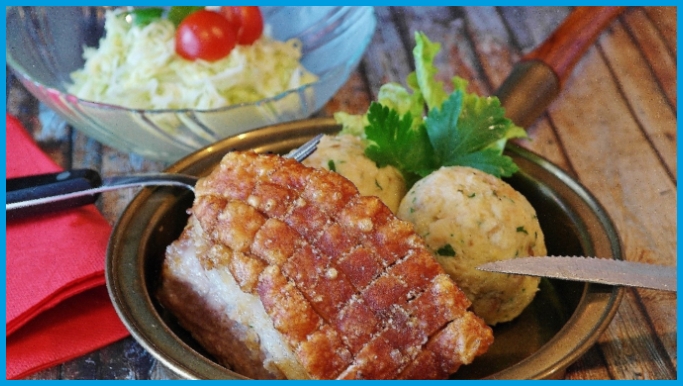

Bavarian Beer
Bavaria is probably best known around the world for its outstanding beer. What is considered the Germans’ national drink is the staple food in Bavaria – beer, also called “liquid bread”. There are some 40 types of beer and over 4,000 brands of Bavarian beer (an overview of the principal beers can be found here). Bavarian beer has a very long tradition and was regulated in 1516 by the Bavarian beer purity law (“Reinheitsgebot”), limiting its ingredients to water, malt, hops and yeast only. Until that point, it was safe to assume that drinking beer could be considered to be a gamble since the unsuspecting guest never knew what exactly the pub was serving. The Reinheitsgebot is still in place today and constitutes the world’s oldest consumer protection law. Bavaria has the highest density of breweries anywhere in Germany, made up of well-known companies such as Paulaner, Augustiner or Löwenbräu but complemented by a large number of small, independent breweries all across the Free State.
“Weißwurst” Sausages, Pretzels, and Sweet Mustard
Among the most popular Bavarian dishes features the so-called “Weißwurst”. The white sausage is made from veal with parsley in pork casing and is boiled rather than fried. It is eaten without the casing, usually together with a pretzel and sweet mustard. Surprisingly, “Weißwurst” is a late breakfast dish. This has its origin in the lack of possibilities to cool the meat back in the days when the “Weißwurst” was invented. To avoid that it goes bad, it simply had to be eaten before noon. This custom has been kept until today, despite the numerous storage and cooling possibilities available to Bavarians nowadays.
“Käsespätzle”
This Bavarian dish is loved by vegetarians and carnivores alike, thanks to its hearty, delicious taste stemming from a unique combination of spaetzle noodles, grated mountain cheese, and fried onions. Its origins lie in the southwestern regions of Swabia and the Allgäu but the popular dish can be found in nearly every Bavarian restaurant and even in the neighbouring regions of Austria and Switzerland. Even though the portions might seem small at first, this dish will most likely keep you sated all day long.
“Schweinebraten” with Dumplings
This might be the best-known Bavarian dish – a roast pork with a dark sauce and dumplings and a kraut salad on the side. The “Schweinebraten” is generally particularly appreciated for its crunchy crust. The dumplings on the side are typically made from dry bread, however there is a large variety of other dumplings made from potatoes, with spinach, with cheese, or even sweet variants with apricots or plums across Bavaria.
“Zwetschgendatschi” Plum Cake
Bavaria has also much to offer for those with a sweet tooth. One example is the traditional plum cake, which is served everywhere in the Free State in summer. The name of “Zwetschgendatschi” (try pronouncing it!) stems from the method of preparation where the plums are pushed (“datschen”) into the dough. This cake is best enjoyed on a sunny Sunday afternoon with lots of whipped cream on top and a cup of coffee on the side.
